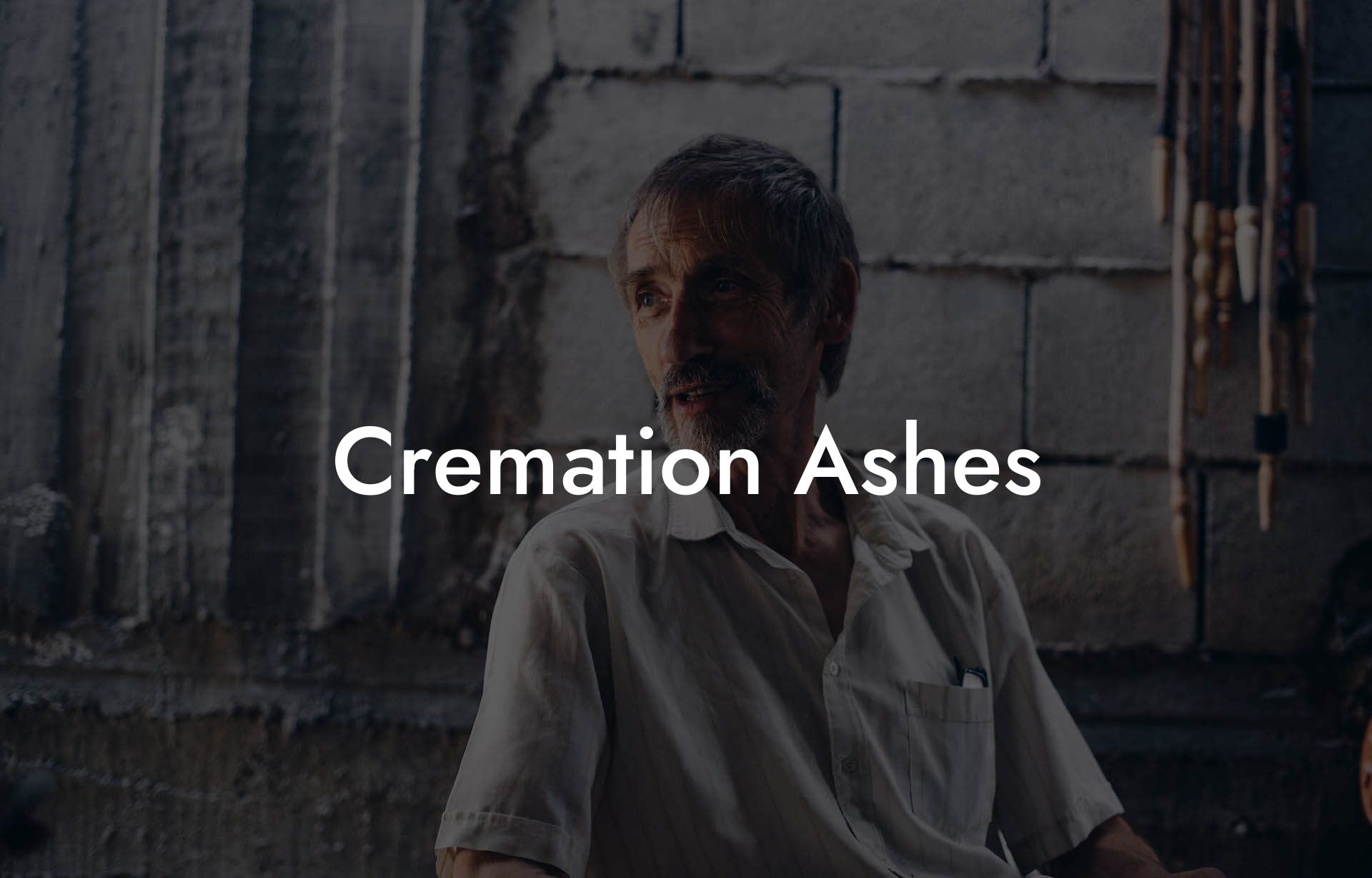Imagine a world where the final farewell is not just a somber goodbye, but a celebration of life, love, and legacy. Welcome to the world of cremation, where the ashes of our loved ones become a symbol of eternal connection and remembrance. Whether you're planning ahead, coping with loss, or simply curious about the cremation process, this comprehensive guide will walk you through the ins and outs of cremation ashes, from the practical to the profound.
Quick Links to Useful Sections
- What Happens to Cremation Ashes?
- Understanding Cremation Ashes: Composition and Properties
- Cremation Ashes: Options for Disposition
- Cremation Ashes and Memorialization
- Coping with Loss: The Emotional Significance of Cremation Ashes
- Resources and Community Support: Your Next Steps
- Cremation Ashes FAQs: Your Questions Answered
What Happens to Cremation Ashes?
After the cremation process, the remains are processed into a fine powder, often referred to as cremation ashes or cremated remains. These ashes are typically placed in an urn or container, which can be kept at home, buried, or scattered in a special location.
But what happens to these ashes, and what are the options for families and individuals? From traditional burials to innovative memorialization methods, the possibilities are vast and varied.
Understanding Cremation Ashes: Composition and Properties
Cremation ashes are made up of the inorganic bone fragments that remain after the cremation process. These fragments are typically white or light gray in color and have a coarse, sand-like texture.
The composition of cremation ashes can vary depending on the individual's bone density, age, and other factors. On average, the ashes weigh around 3-7 pounds and take up about 200 cubic inches of space.
Cremation Ashes: Options for Disposition
The options for disposing of cremation ashes are as unique as the individuals they represent. From traditional burials to eco-friendly scattering, the choices are vast and varied.
- Traditional Burial: Burying the ashes in a cemetery or memorial garden, often with a headstone or marker.
- Scattering: Releasing the ashes in a special location, such as a park, beach, or mountain.
- Home Storage: Keeping the ashes in an urn or container at home, often with a memorial or shrine.
- Tree Planting: Mixing the ashes with soil and planting a tree, creating a living memorial.
- Water Burial: Scattering the ashes in a body of water, such as an ocean or lake.
Cremation Ashes and Memorialization
Cremation ashes can be used to create a wide range of memorials, from traditional urns to innovative art pieces.
- Urn Selection: Choosing an urn that reflects the personality, interests, or hobbies of the deceased.
- Memorial Jewelry: Creating pendants, rings, or other jewelry that contain a small amount of cremation ashes.
- Artistic Memorials: Using cremation ashes to create paintings, sculptures, or other art pieces.
- Glass Memorials: Encapsulating the ashes in glass, creating a beautiful and delicate keepsake.
Coping with Loss: The Emotional Significance of Cremation Ashes
The cremation ashes of a loved one can serve as a powerful symbol of connection and remembrance, helping families and individuals cope with loss.
By keeping the ashes close, individuals can feel a sense of comfort and reassurance, knowing that their loved one is still with them in spirit.
Resources and Community Support: Your Next Steps
Whether you're planning ahead or coping with loss, it's essential to have access to resources and community support.
- Cremation Associations: Organizations that provide guidance, support, and resources for individuals and families.
- Grief Counseling: Professional counseling services that help individuals cope with loss and bereavement.
- Online Communities: Online forums and support groups that connect individuals who have experienced loss.
Cremation Ashes FAQs: Your Questions Answered
Here are some frequently asked questions about cremation ashes, from the practical to the profound:
1. What is the average cost of cremation?
The average cost of cremation varies depending on the location, funeral home, and services chosen. On average, the cost ranges from $1,000 to $3,000.
2. How long does the cremation process take?
The cremation process typically takes 1-2 hours, depending on the size and weight of the individual.
3. Can I witness the cremation process?
Yes, many funeral homes and crematories offer the option to witness the cremation process.
4. Can I divide the cremation ashes among family members?
Yes, it's possible to divide the cremation ashes among family members, often using a process called "ash splitting."
5. Are cremation ashes safe to handle?
Yes, cremation ashes are safe to handle, but it's recommended to wear gloves and avoid inhaling the ashes.

